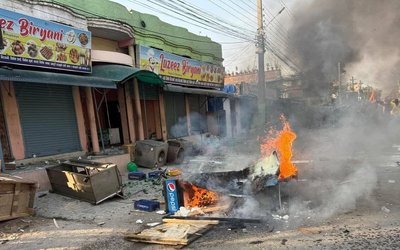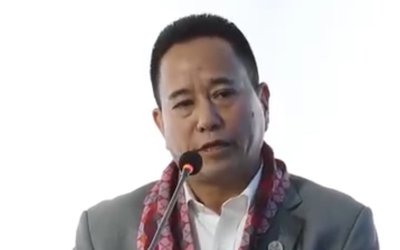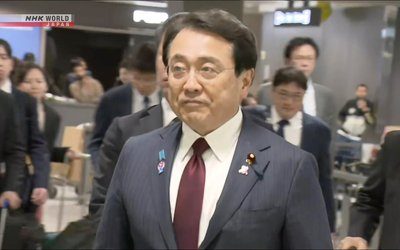More on News





Having working long time in HIV/AIDS, Bina Pokharel Social Mobilization Advisor UNAIDS spoke to New Spotlight. Excerpts:
How do you see women’s role in general and role of women working to prevent HIV/AIDs particular in the last two decades?
The role of women in last two decades has been remarkably changed from a passive beneficiaries of welfare programs to the active participants of the development programs, as an agent of change. Women empowerment has been recognized as the most effective instrument for poverty alleviation and given top priority in the Interim Plan too. Women Development Programs (WDP) were initiated throughout the country, in all 75 districts. As a result women are more empowered and playing diverse role from policymakers to advocates to activist enforcing the access of women to information, education, legal and health rights. Almost 33 percent of the Constituent Assembly members are women who are actively involved in constitution making process. Enactment of Domestic Violence (Control and Punishment) Act, 2009 to put an end to domestic violence, ensuring social security provision for women in general and widows/single women in particular, issuance of the citizenship certificates parenting the name of the mother are some of the key achievements in this regard.
In spite of all these gains, there remains a major challenge for these women activists and leaders to strategically relate HIV and AIDS as one of the causes and consequences directly related to gender based discrimination and violence.
Are Nepalese women still vulnerable to infection of HIV?
Yes, in fact the vulnerability of women to HIV is incresing. Although Nepal’s epidemic is said to be concentrated among the most at risk groups like people who inject drug, men having sex with men, female sex workers, estimated and reported data show that more women are being infected through their husband who worked as the seasonal migrant labors in India. As of the reported infection, 1 in 4 infected is a housewife who is perceived of having no risk behavior. The increasing vulnerability of women to HIV infection is because women know less than men about how HIV is transmitted and how to prevent infection, whatever they know is often not utilized in to practice due to their low status in the family, their relative dependency and powerlessness to refuse sex or negotiate safe sex, especially in the context of marriage and the prevailing gender related violence and discrimination.
What is your overall impression about the HIV/AIDS policy towards Nepalese women?
Nepal’s response to HIV and AIDS is guided by National HIV and STI Policy 2011. The objective taken by the Policy of protecting and promoting the human rights of the infected and affected and high risk groups by addressing the negative norms and values, stigma and discrimination associated with HIV is very relevant to guide the national response with direct impact on the lives of Nepalese women. Right to basic health, Human rights and gender are the directive principles of the Policy. It emphasizes for the gender inclusive and right based programming specially for women and children infected and affected by HIV and the prevention of infection from the infected mother to her child. Overall National policy has clear guidance for the national response to address the HIV related vulnerability and risk of Nepalese women. As per the Policy guidance newly endorsed National HIV and AIDS Strategy 2011-2016 also incorporates the domestic and gender based violence as an strategic areas to be addressed in addition to gender equality and human rights issues. However the effective implementation of the national Policy and strategy remain a challenge due to the political instability. Draft HIV Bill to protect and promote the rights of people infected, affected and vulnerable groups including women is pending since long.
Despite rising literacy, violation against women continues to rise. Do you see any link between violence and HIV infections?
Violence against women has been considered as a serious concern for increasing vulnerabilities of women to HIV infection. Violence against women is both a cause and consequence of HIV infection. Research has confirmed a strong correlation between sexual and other forms of abuse against women and women's chances of contracting HIV. Use of condom (male or female) is irrelevant when a woman is being beaten and raped. Moreover, forced vaginal penetration increases the likelihood of HIV transmission. In addition, the fear of violence prevents many women from asking their partners to use condoms, accessing HIV information, and from getting tested and seeking treatment, even when they strongly suspect they have been infected. Many women are in danger of being beaten, abandoned or thrown out of their homes if the HIV-positive status is known. If HIV-prevention activities are to succeed, they need to occur alongside other efforts that address and reduce violence against women and girls. Considering all these facts, UN General Assembly High Level Meeting on AIDS from 8–10 June 2011 in New York adopted a Political Declaration that includes Eliminating Gender Inequality as one of the ten targets to be achieved by 2015.
How do you see the role of Nepalese women activist in HIV/AIDS campaign?
As more of the women in rural areas being infected from HIV, women leaders, activist has a great role to play in integrating HIV and AIDS issue in to the ongoing women empowerment process/programs focusing on increasing women’s access to economic opportunities and resources, strengthening their capacity to capitulate traditional gender roles and increasing women’s political power and presence in decision making positions as all these are indirectly reducing the HIV related risk and vulnerabilities of women. To reverse the spread of HIV, women activist must address the critical role that gender relations plays in sexual and reproductive life, and how it affects HIV prevention. They should play catalytic role in ending the Gender and social inequalities that shape people's behaviors and limit their choices through effective policies and programs. Women activists need to advocate to increase the access of rural women to HIV prevention and treatment services on sexually transmitted infection, HIV testing and counseling, prevention of mother to child transmission, Anti retro-viral treatment and opportunistic infections. Women activist need to campaign for the strengthening of the existing institutions like Ministry of Women Children and social Welfare, National Women Commission for providing the social protection and livelihood support and National Human Rights Commission for the protection and promotion of rights of women infected and affected by handling the cases of violence through the redressal mechanism.





